To us, therefore, who believe, the Bridegroom always appears beautiful. Beautiful is God, the Word with God; Beautiful in the Virgin’s womb, Where, without losing his divinity, he assumed humanity; Beautiful is the Word born as a child, because while a child, he sucked milk, while being carried, the heavens spoke, the angels sang praises, the star directed the journey of the Magi, he was adored in the crib, food for the meek. He is beautiful, therefore, in heaven and beautiful on earth; Beautiful in the womb, beautiful in his parents’ arms: Beautiful in the miracles, beautiful in his sufferings; Beautiful in inviting to life, beautiful in despising death, Beautiful in giving up his life and beautiful resuming it; Beautiful on the cross, beautiful the tomb, beautiful in heaven. (St. Augustine, Expositions on the Psalms 44, 3)

By January 6th most Americans will have taken down their trees, put away lights and stopped playing Christmas music. In the secular calendar, Christmas ends abruptly on the 26th, and after weeks of celebrating most are ready for it to end.
But in the Church, this should not be the case. For Christmas Day is only the beginning of the feast, not the climax. The 12 days of Christmas do not lead up to the celebration of Christ’s birth, but rather stretch from the Incarnation to the feast which celebrates his Manifestation to the Gentiles, the feast of Epiphany.12
Traditionally, Twelfth Night and Epiphany are the festive crescendo to Christmas celebrations. The customs of these days are numerous, and although the suppression of Epiphanytide has certainly put a damper on the traditional festivity of the day, in many places, these traditions are making a comeback.34 In many European and South American cities, as well as New York City, crowds still gather to participate in a Three Kings Parade.5
In the liturgy of the Christmas season there is a special emphasis on beauty and joy, for on Christmas, Beauty himself takes on flesh. It is fitting that artists are so drawn to the Nativity. As
wrote:It was indeed on December 25th that Christian iconography was born. The entire material world from that moment on acquired a new and definitive purpose: to glorify the Son of God made Son of Man. In this way it rises above itself like the smoke of incense, ever gesturing beyond.6
On Epiphany, this theme is especially prescient in the readings and Psalms for the feast and is summarized in the extraordinary collect:
O God, who on this day revealed your Only Begotten Son to the nations by the guidance of a star, grant in your mercy, that we, who know you already by faith, may be brought to behold the beauty of your sublime glory. Through our Lord Jesus Christ, your Son, who lives and reigns with you in the unity of the Holy Spirit, God, for ever and ever.
The festive joy of Epiphany is reflected in the artistic tradition in paintings of the Adoration of the Magi. Although the Nativity is certainly joyful, in the artistic tradition, it is often depicted in a solemn manner. As I wrote last week, the art of the Nativity points to Christ’s saving death and often highlights the solitude of the Holy Family. Sometimes, there is even an air of sorrow in these paintings/icons as Joseph endures temptations or as Mary contemplates the death of her son.
By contrast, paintings of the Adoration of the Magi, are more exuberant, for when the Magi came, that Beauty born to the Virgin became known, even to the Pagans. In these paintings, Christ sits in glory on the throne of his mother. He no longer lays in the coffin-like manger. The burial-like swaddling clothes are stripped away, revealing the splendor of his humanity.
Perhaps the most iconic example of the festive splendor of the Adoration of the Magi is Gentile da Fabriano's majestic painting. But today, I am going to explore Fra Angelico and Fra Filippo Lippi’s Adoration of the Magi, which you may have seen if you have visited the National Gallery in Washington. After several visits to the National Gallery myself, I have become particularly attached to this painting. It is one of the paintings that awakened my love for art. I remember the first time I saw it—thinking that everything else in the room seemed dull in comparison. For the colors in this painting are so brilliant and luminous; the figures so expressive and lovely; and the shape so unique and mesmerizing.
In the book Italian Hours, Henry James wrote,
The large Fra Angelico in the Academy is as clear and keen as if the good old monk stood there wiping his brushes; the colours seem to sing, as it were, like new-fledged birds in June.7
Although James was not speaking of the Adoration of the Magi, when I read this passage, the painting in the National Gallery came to mind. Fra Angelico’s brilliant handling of tempera paint is part of why he is able to depict the joy and beauty of beatitude like no other artist. But, it is not only technique that sets Fra Angelico apart. Fr. John Saward, a fellow of the Oxford Blackfriars, articulates the singular quality that gives Fra Angelico’s paintings their angelic glow:
Sanctity alone does not make a man a great painter, but when a great painter is also a saint, when he allows the Holy Spirit to supernaturalise the natural genius with which he has been blessed, then his art achieves a matchless purity…He can depict loving devotion to Christ's Pa ssion, humility, purity, and compassion for the poor with stunning authenticity because his own life radiates all these beautiful virtues.8
Although, Fra Angelico only started this painting—Fra Fillippo Lippi finished it—the holy friar’s vision shines through, especially in the figures of Mary and the Christ child, which he most certainly painted according to scholars.
If you visit the renaissance rooms at the National Gallery, the Adoration of the Magi is hard to miss. With the frame—which circles this vision of divine adoration like a halo—the whole work is about 6 feet in diameter. This large size is rather unusual for a tondo—a circular painting that was popular in private devotional works of the Renaissance.
The shape of this painting is far from coincidental, but essential to the meaning of the work. Most obviously, the circle—a shape with no beginning and no end—represents the eternal rule of the Divine King. However, as we look at the painting, we will discover that the shape also directs our gaze in an important way.
When you first glance at the painting, your eyes rest on Mary as well as the almost awkward looking, over-sized ox in the middle of the stable. It may seem odd, but as I wrote last week, the ox and the donkey are among the oldest and most essential figures in Nativity paintings. They are symbolic of how Gentiles and Jews— who are also represented by the Magi and Shepherds—come together to worship Christ, the Eternal King. (For more on the Nativity, see my article on Christ of the Cave. This article continues below).
Christ of the Cave: What the artistic tradition says about where Jesus was born
“The allotted function of art is not, as is often assumed, to put across ideas, to propagate thoughts, to serve as an example. The aim of art is to prepare a person for death, to plough and harrow his soul, rendering it capable of turning to good.”—Andrei Tarkovsky
Fra Angelico’s painting is so full of people clamoring to see the Christ child that we too must do some searching to find him and the Magi who seek him. Mary and Christ stand out brilliantly, partly because they are of Fra Angelico’s hand, but also because they are in the forefront of the painting and larger than everyone else. One Magi stands out as he kneels down before the King of Kings, but the two others seem lost in the crowd at first. In looking for them, we become lost in the procession ourselves.
The dense crowds contrast masterfully with the relatively empty stable, creating spatial balance and pushing our gaze to the edges of the painting where throngs of people gather in a procession reminiscent of the pageants that would have processed through Florence to celebrate the Epiphany. The painting helps give us a sense of the scene described by the French poet Frédéric Mistral (1830-1914)
A joyful shout rang from every throat as the magnificence of the royal pageant dazzled our sight. A flash of splendour and gorgeous colour shone in the rays of the setting sun, while the blazing torches showed the gleams of gold on crowns set with rubies and precious stones. The kings! The kings! See their mantles, their flags, and the procession of camels and horses which are coming ...We ran to the church. It was crowded, and, as we entered, the voices of the people, accompanied by the organ, burst forth into the superbly majestic Christmas hymn: 'De matin ai rescountra lou trin.’9
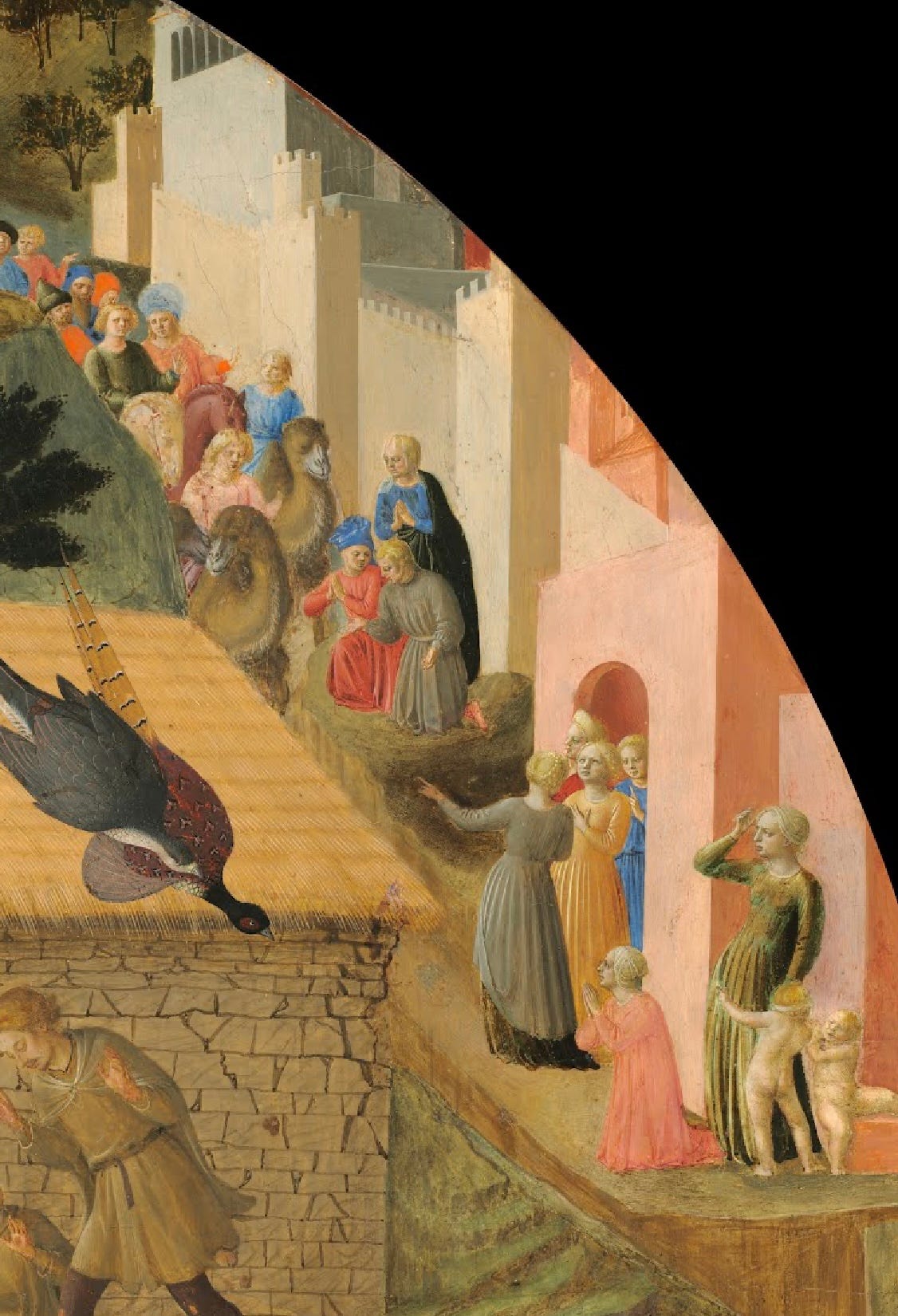
Here, Fra Filippo has painted a parade of people reminiscent of the one described above. In the top right of the painting, camels walk down the street, recalling the first reading from Isaiah. A woman dressed in pink kneels as others chat, pointing upward, towards the star of Bethlehem. Below them, a mother with two children clinging to her legs, has stepped outside to see what the clamor is about. A throng of pilgrims floods through the crumbling stone archway, which represents the triumph of Christianity over paganism. And a triumph it truly is, much like a Roman Triumph for a victorious emperor; only now, the Emperor is Christ and the spoils of his victory are the jubilating souls of the Redeemed. Even some nude bathers, who perhaps represent pagans, come out to see the star. One man dressed in radiant red, holds his hands out in wonder. Another, in blue, holds his hands together in prayer as he rides alongside the crowd.
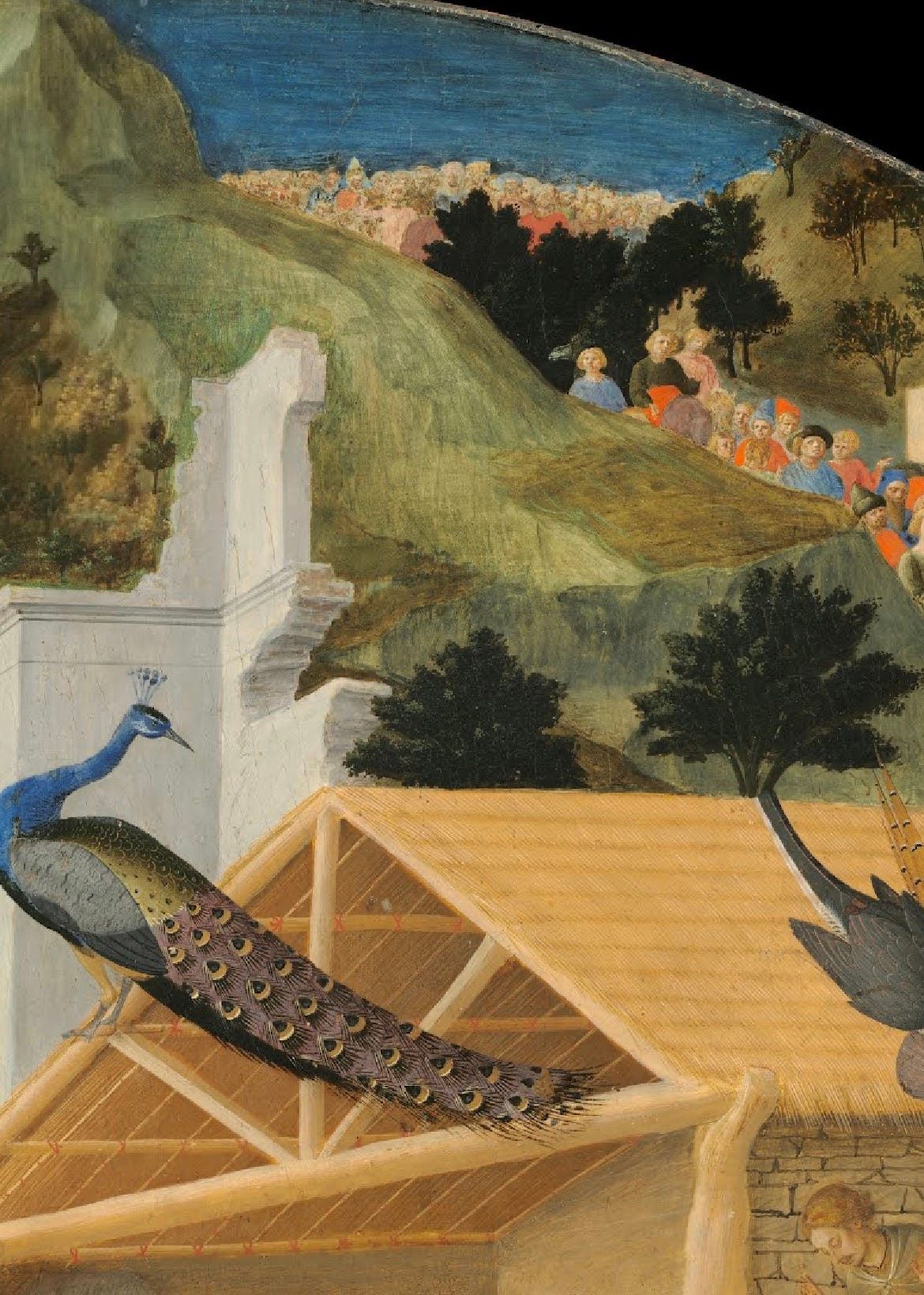
As the procession winds through the town, up through the mountains, and down through the arch, the painters invite us to contemplate the long and perilous journey of the Magi. That their journey has been combined with a procession, reminds us that their journey was a pilgrimage, and that we too are pilgrims on this earth journeying to see God. The crowded throng reminds us that we do not travel to see the Christ child alone, but with the Church, alongside the saints and other Christians who help spur on our devotion, so that we may truly desire to behold the face of Christ.
The procession or parade is not just Christmas clutter, but serves to “lift up our hearts” to the Lord. As Pope Benedict XVI said in an Epiphany homily, “Their outward pilgrimage was an expression of their inward journey, the inner pilgrimage of their hearts.”10
Finally, close to the forefront of the painting, we see two turbaned figures. Are these the Magi? They are dressed in the garb of where the wise men are said to travel from; however, there are still others in front of them.
Amidst the crowd it is Mary who directs us to where Christ is— and where the Wise Men are. Her luminous blue robes, which so elegantly drape over her shoulders and knees, symbolize the divinity that overshadowed her.
Although I think the two artists’ styles blend well in this painting, the figures that Fra Angelico painted certainly stand out from the rest. It is not just their size that makes them stand out, but the luminous color of their robes and the serenity of the face of Mary.
Christ sits on her lap holding a tiny pomegranate which symbolizes both the apple from Eden as well as the Church, for as the pomegranate holds so many seeds the Church holds many peoples. Christ wears a gossamer garment, which is so finely painted, it is barely visible.
Finally, where are the three Magi? Once we find Mary and Jesus, we find our way to the three Kings. They are not marked by halos, but by a heavenly glow for they bask in the glory of the Eternal King. Like Mary and Joseph, their garments are gilded and richly decorated.
The different ages of the Magi here represent the three ages of man. The oldest wise man, in all humility, kneels before the Christ child, kissing his tiny foot. The other two kneel behind him, wearing splendorous garments which Fra Angelico has decorated with gold. One holds a golden vessel, reminding us of their gifts described in the Gospels:
They were overjoyed at seeing the star, and on entering the house they saw the child with Mary his mother. They prostrated themselves and did him homage. Then they opened their treasures and offered him gifts of gold, frankincense, and myrrh. (Matthew 2:9-11)
There are many explanations for what their gifts represent. St. Leo the Great explains them like this: "With gold they honor the Person of a King, with myrrh that of Man, with incense that of God."
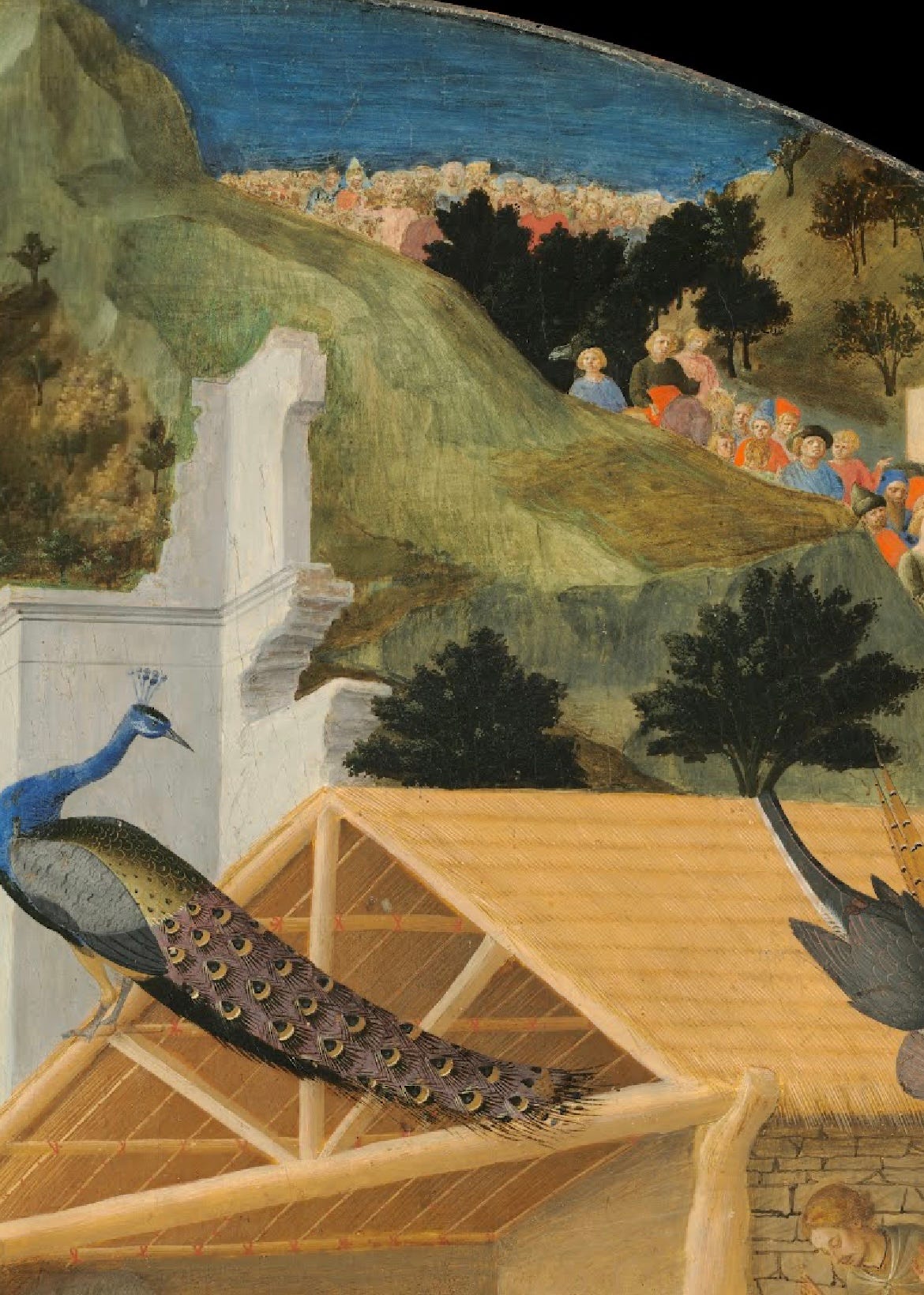
The intricate carpet of flowers, a Fra Angelico signature, reminds us of this and evokes Paradise and the garden of Eden. Thus, The Adoration of the Magi foreshadows the worship of the Lord in the Heavenly Jerusalem described in Revelation and depicted atop the mountain in this painting. What was lost has been restored in Christ, the eternal King. This painting is a beautiful visual synthesis of the readings for Epiphany, depicting how Christ’s birth and the Wise Men’s journey fulfills the first reading from Isaiah:
Rise up in splendor, Jerusalem! Your light has come, the glory of the Lord shines upon you. See, darkness covers the earth, and thick clouds cover the peoples; but upon you the LORD shines, and over you appears his glory. Nations shall walk by your light, and kings by your shining radiance. Raise your eyes and look about; they all gather and come to you: your sons come from afar, and your daughters in the arms of their nurses. Then you shall be radiant at what you see, your heart shall throb and overflow, for the riches of the sea shall be emptied out before you, the wealth of nations shall be brought to you. Caravans of camels shall fill you, dromedaries from Midian and Ephah; all from Sheba shall come bearing gold and frankincense, and proclaiming the praises of the LORD. (Isaiah 60:1-6)
In gazing at the painting or even better, participating in a parade or procession, we are encouraged to unite spiritually with the Magi’s pilgrimage to follow the star and adore the King of Kings. In doing so, we see and feel the truth we celebrate—that people of all nations unite to worship the divine King. We are reminded of how our life on Earth is a pilgrimage to behold the holiness and splendor of Christ, and to become holy ourselves so that we may stand his presence.
More on Fra Angelico:
The High King’s Palace in Fra Angelico’s Coronation of the Virgin
When the devout painter Guido di Pietro became a Dominican brother, he took the name “Fra Giovanni.” Today, he is known as Fra Angelico. Some say he received this title because he painted …
Fra Angelico’s Last Judgment and Hallowtide
“When the mists of sin no longer cloud the eye of your soul, you see that blessed vision clearly in the peace and purity of your own heart. That vision is nothing else than the holiness, the purity, the simplicity, and all the other glorious reflections of God’s nature, through which God himself is seen.” —Saint Gregory of Nyssa
Epiphany celebrates three manifestations, but Christ’s manifestation to the magi is the one emphasized in the Western Church.
CCC 528: “The The Epiphany is the manifestation of Jesus as Messiah of Israel, Son of God and Saviour of the world. The great feast of Epiphany celebrates the adoration of Jesus by the wise men (magi) from the East, together with his baptism in the Jordan and the wedding feast at Cana in Galilee. 212 In the magi, representatives of the neighbouring pagan religions, the Gospel sees the first-fruits of the nations, who welcome the good news of salvation through the Incarnation. The magi's coming to Jerusalem in order to pay homage to the king of the Jews shows that they seek in Israel, in the messianic light of the star of David, the one who will be king of the nations.213 Their coming means that pagans can discover Jesus and worship him as Son of God and Saviour of the world only by turning towards the Jews and receiving from them the messianic promise as contained in the Old Testament. 214 The Epiphany shows that "the full number of the nations" now takes its "place in the family of the patriarchs", and acquires Israelitica dignitas 215 (is made "worthy of the heritage of Israel").
It’s not just secular culture that has made us less aware of the importance of this feast. In the 1955, the privileged Octave was removed from the calendar, and later Epiphanytide, which extended the Christmas season to February 2nd was suppressed. In the 1970 reform to the U.S calendar, Epiphany was moved from its ancient feast day on January 6th to the most convenient Sunday and the Christmas season was shortened from February 2nd to whatever day Epiphany fell on. In the Extraordinary form, Epiphany is still celebrated on the 6th and the Christmas season still lasts till February 2nd. For more on this see Gregory Dipippo’s article on when the Christmas season ends: https://www.newliturgicalmovement.org/2018/01/when-does-christmas-season-end.html?m=1
See Michael Foley’s article on these customs:
https://www.newliturgicalmovement.org/2025/01/epiphany-and-its-customs.html?m=1
https://www.osvnews.com/2024/01/06/everyone-can-fit-around-the-manger-three-kings-parades-flood-polands-streets-on-epiphany/
https://www.euronews.com/2024/01/06/in-pictures-christians-across-europe-celebrate-epiphany
https://www.gutenberg.org/files/6354/6354-h/6354-h.htm
Saward, John. 2011. The Beauty of Holiness and the Holiness of Beauty: Sanctity, and the Truth of Catholicism. Ignatius Press
Thanks to
for sharing this passage on Facebook. The quote is from Mistral’s memoir which you can find here: https://readingroo.ms/5/6/0/4/56040/56040-h/56040-h.htmhttps://www.vatican.va/content/benedict-xvi/en/homilies/2013/documents/hf_ben-xvi_hom_20130106_epifania.html

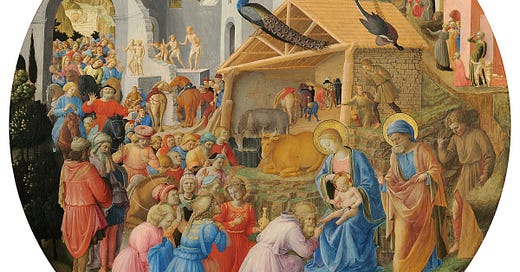


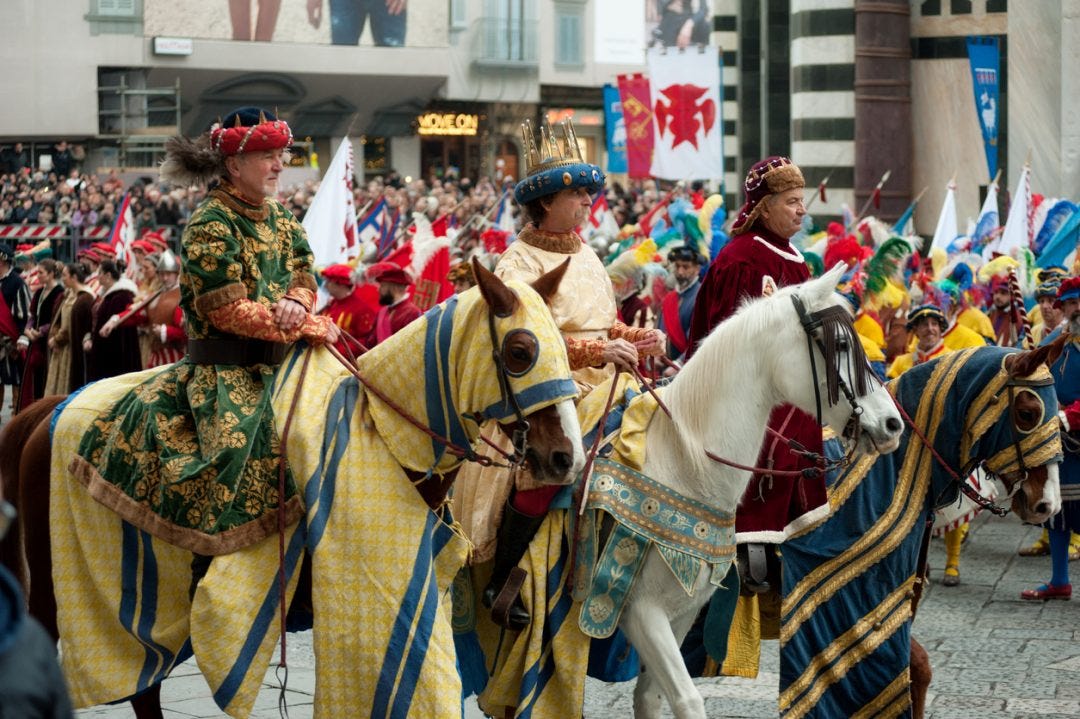
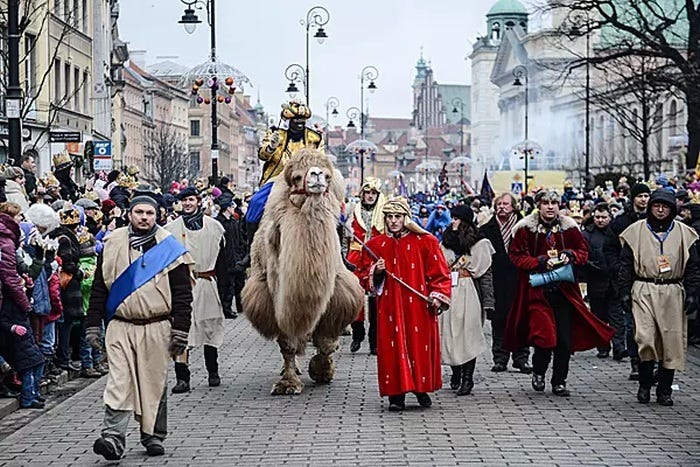
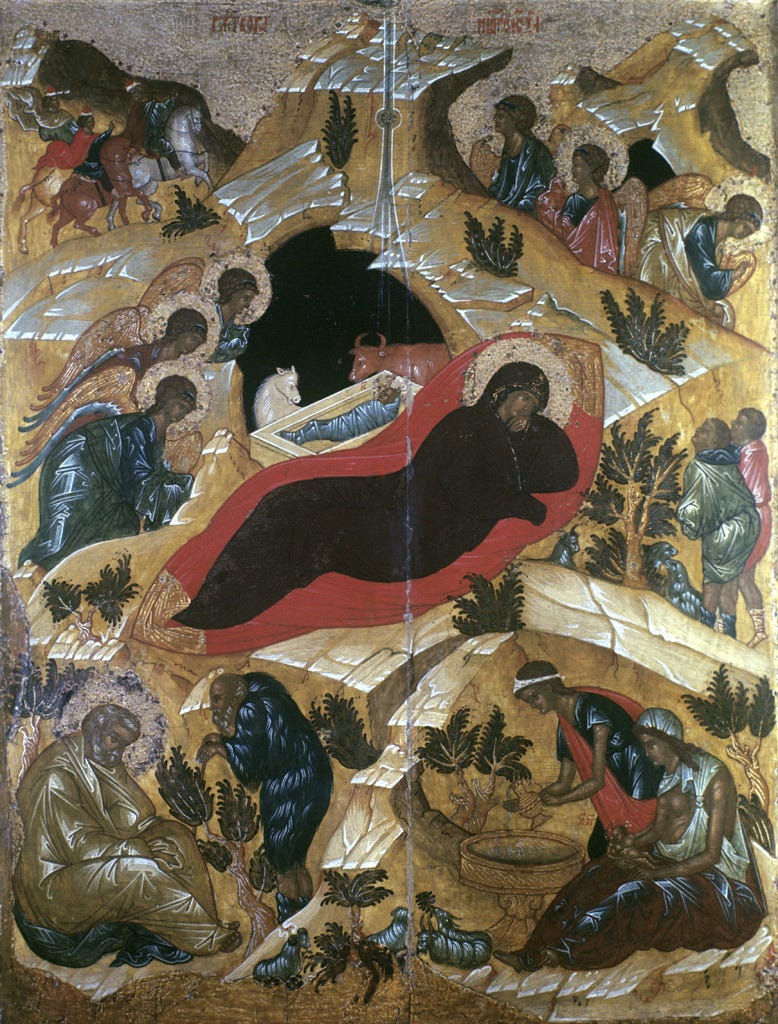
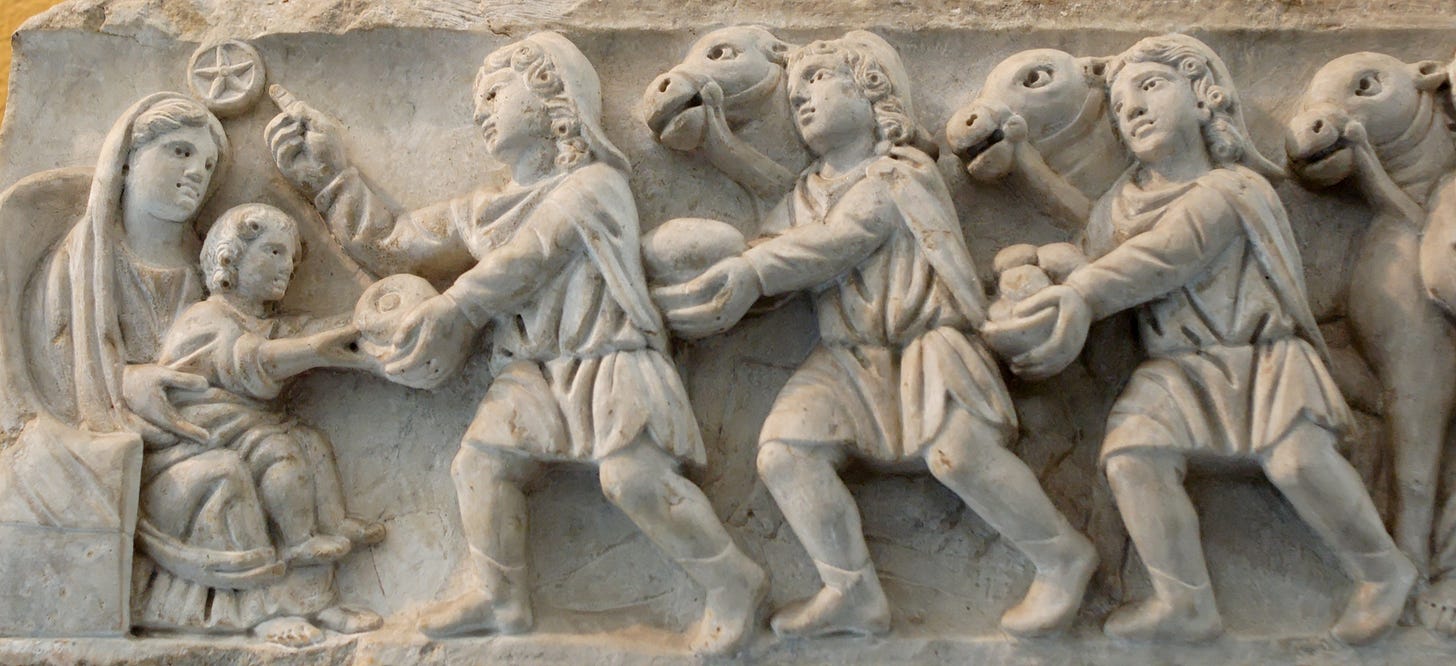
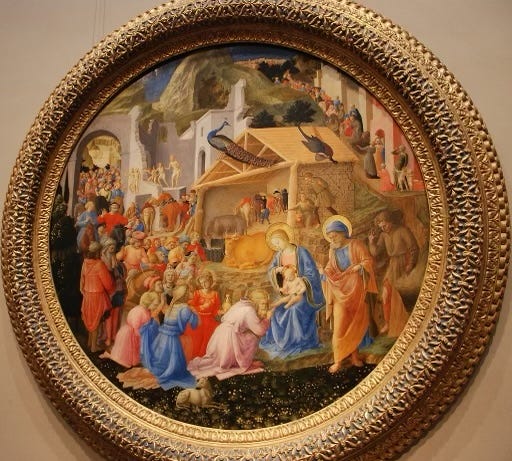
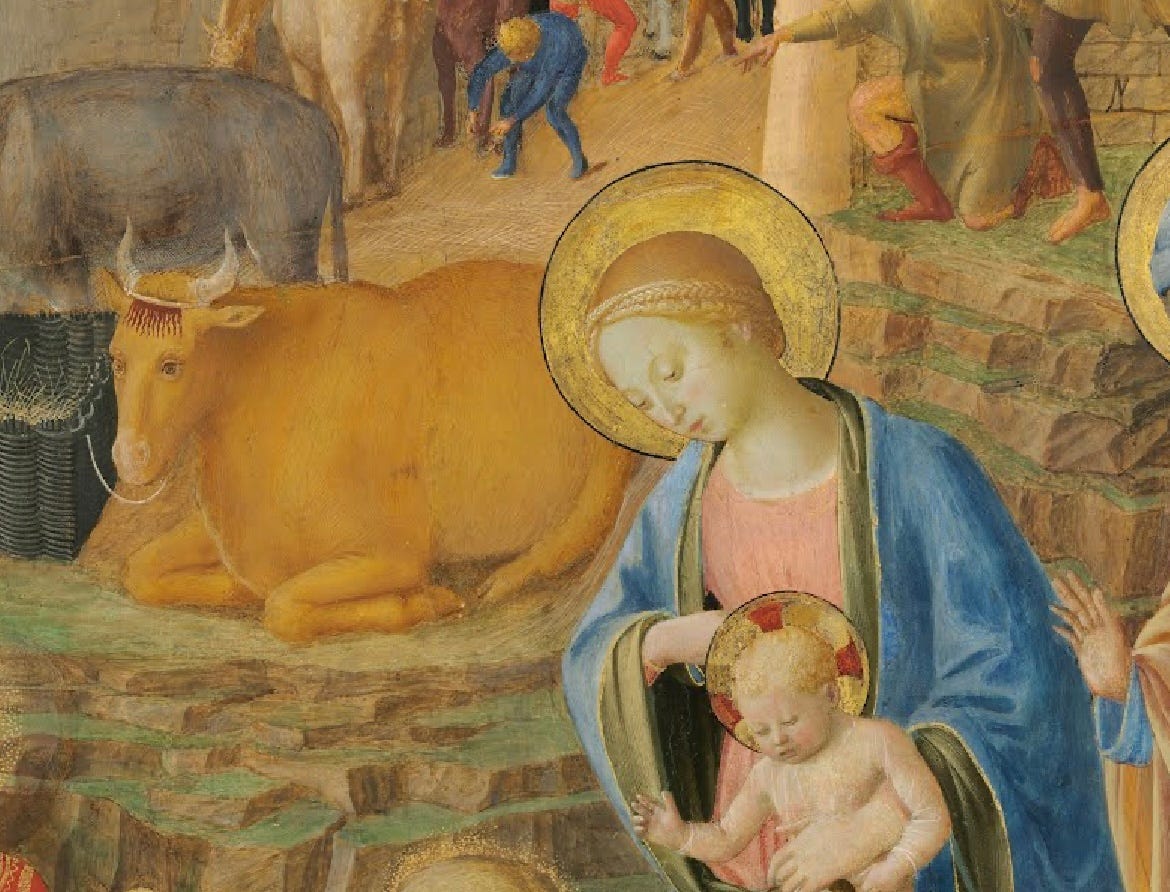

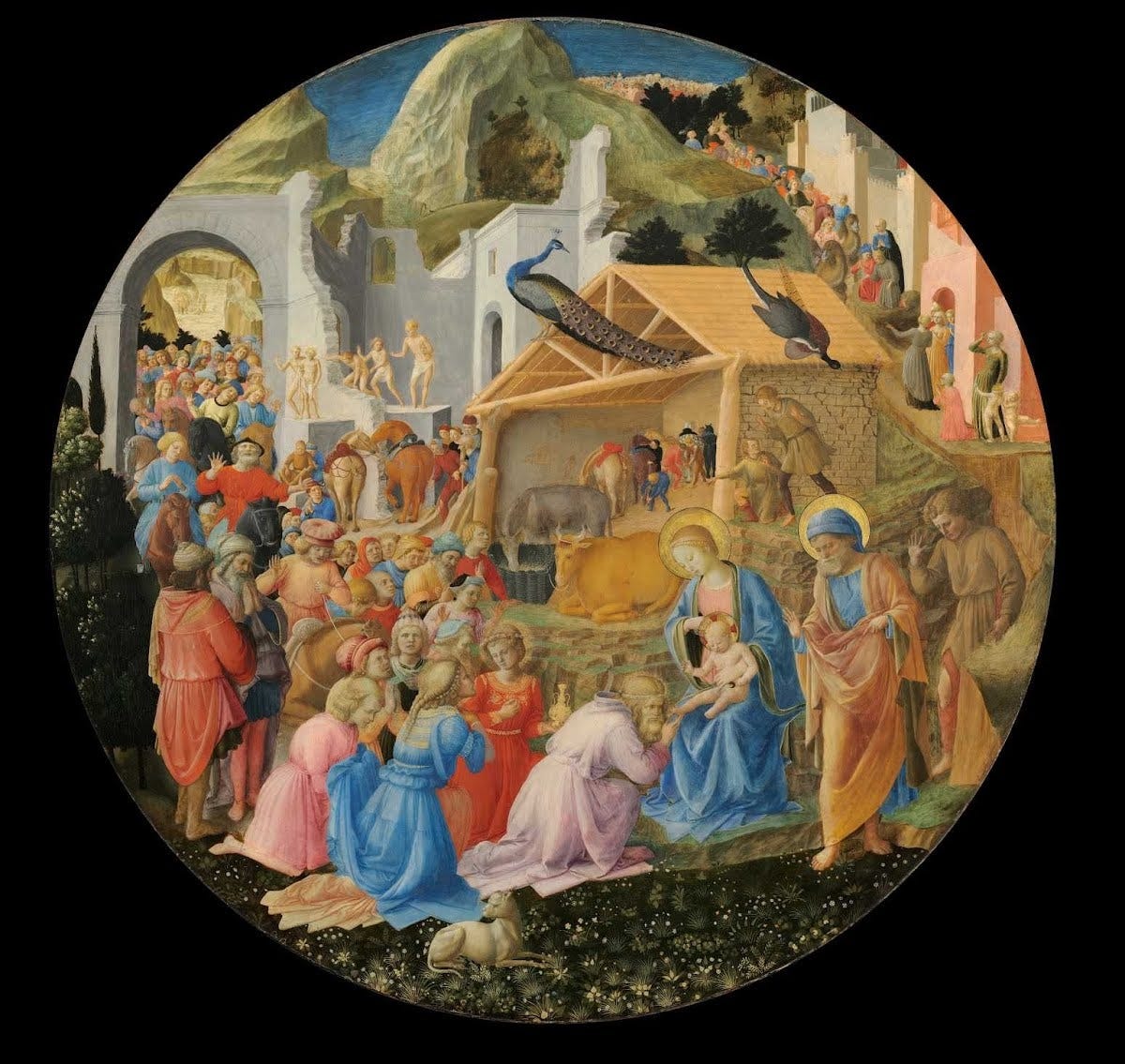
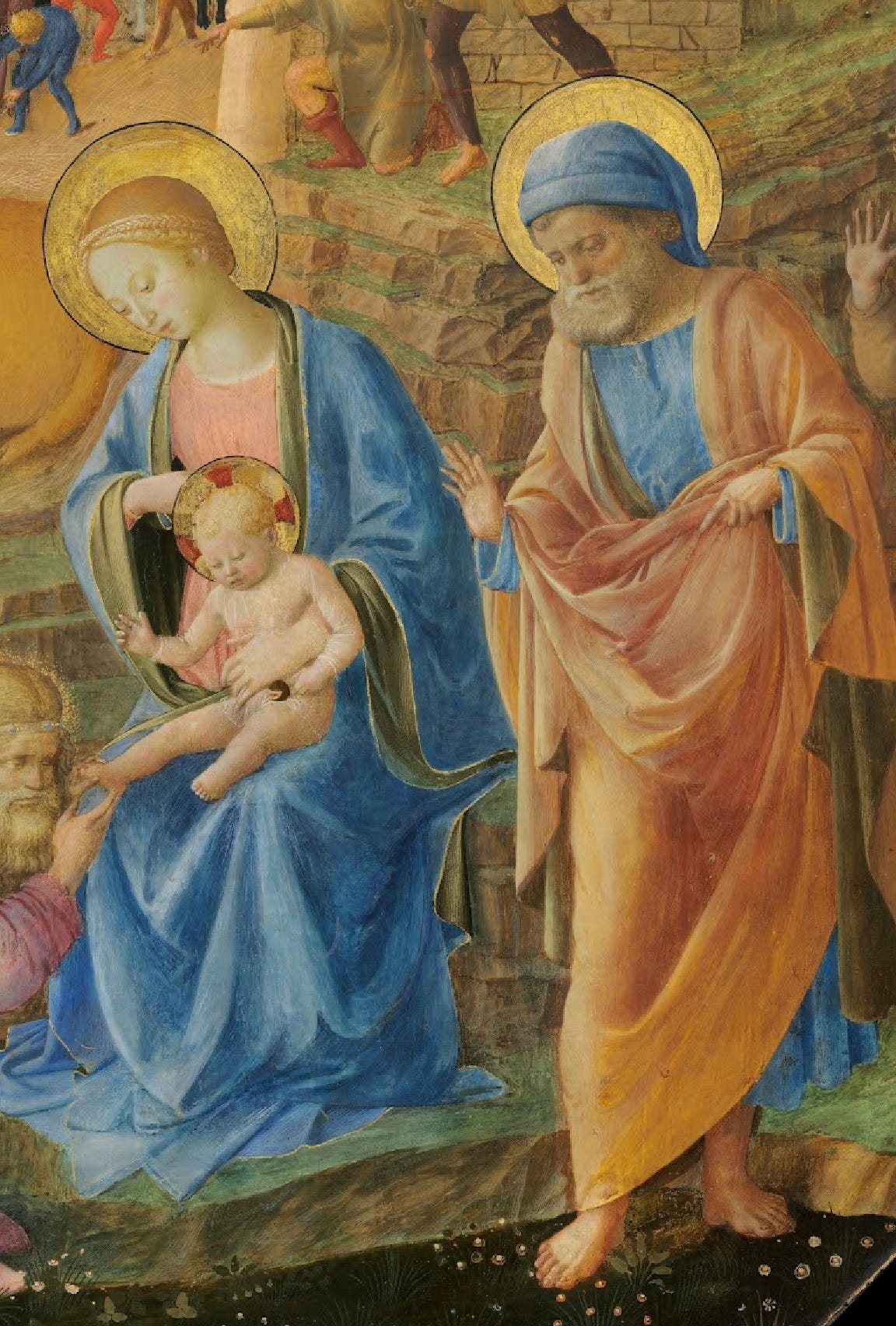
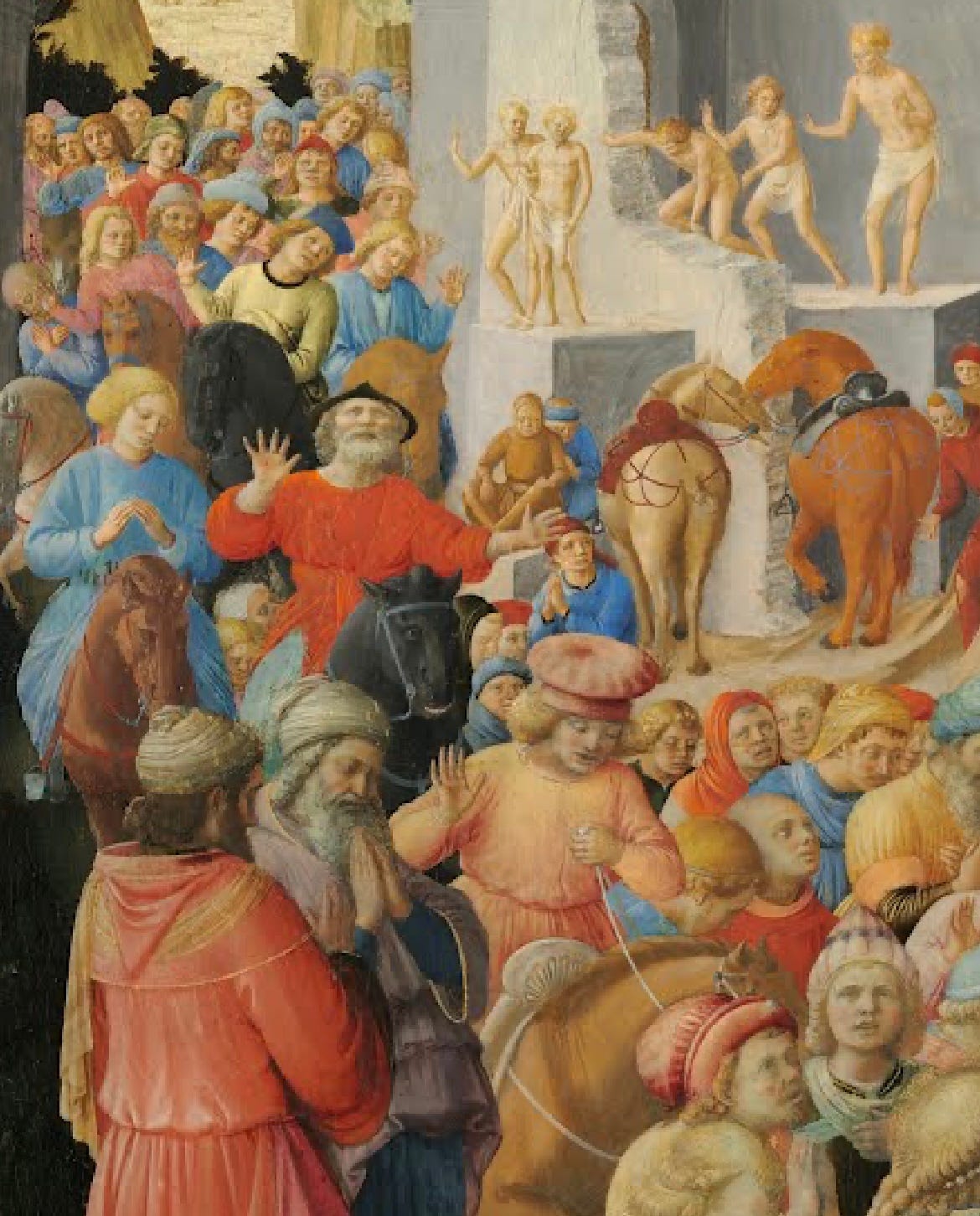
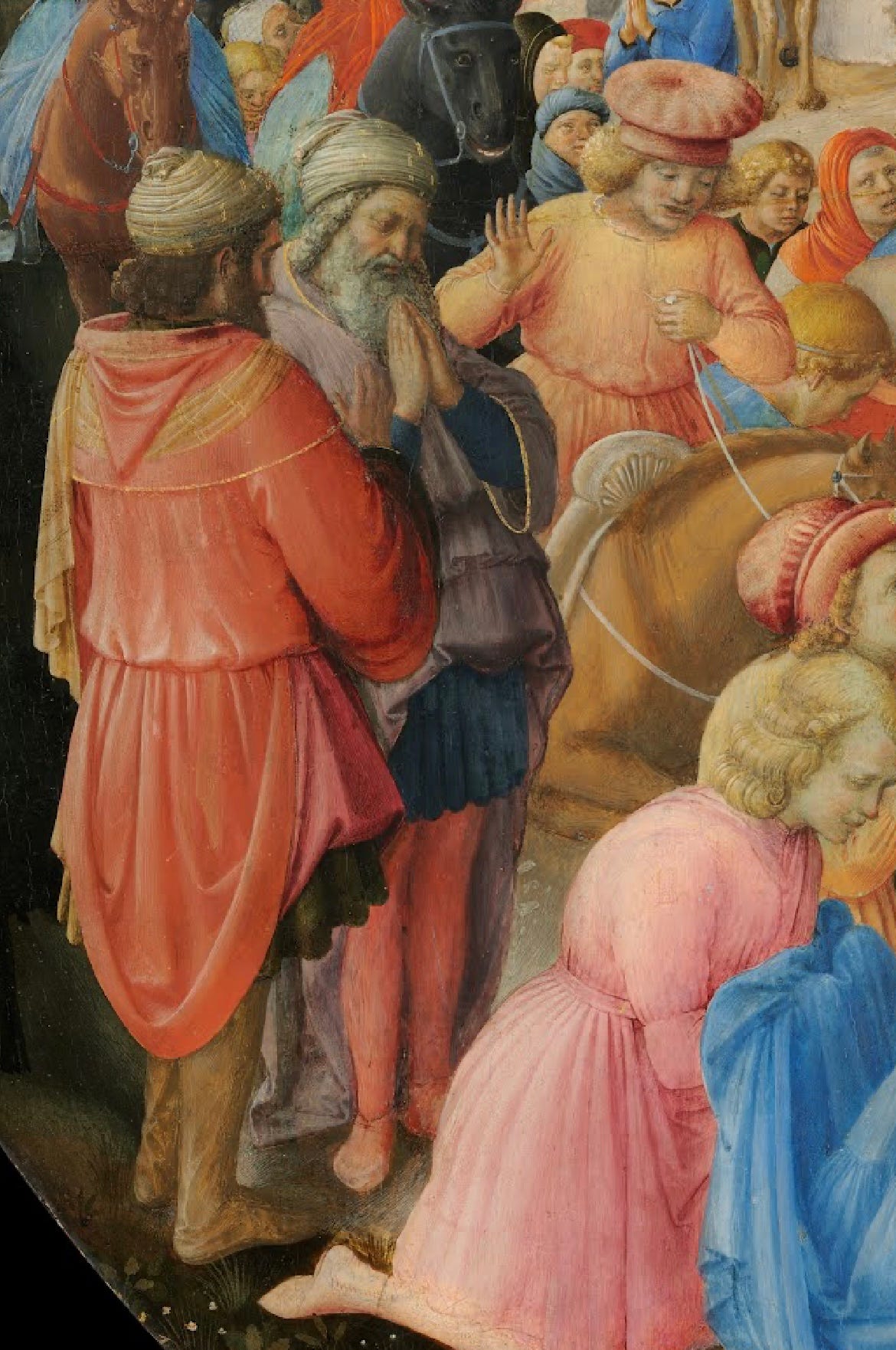
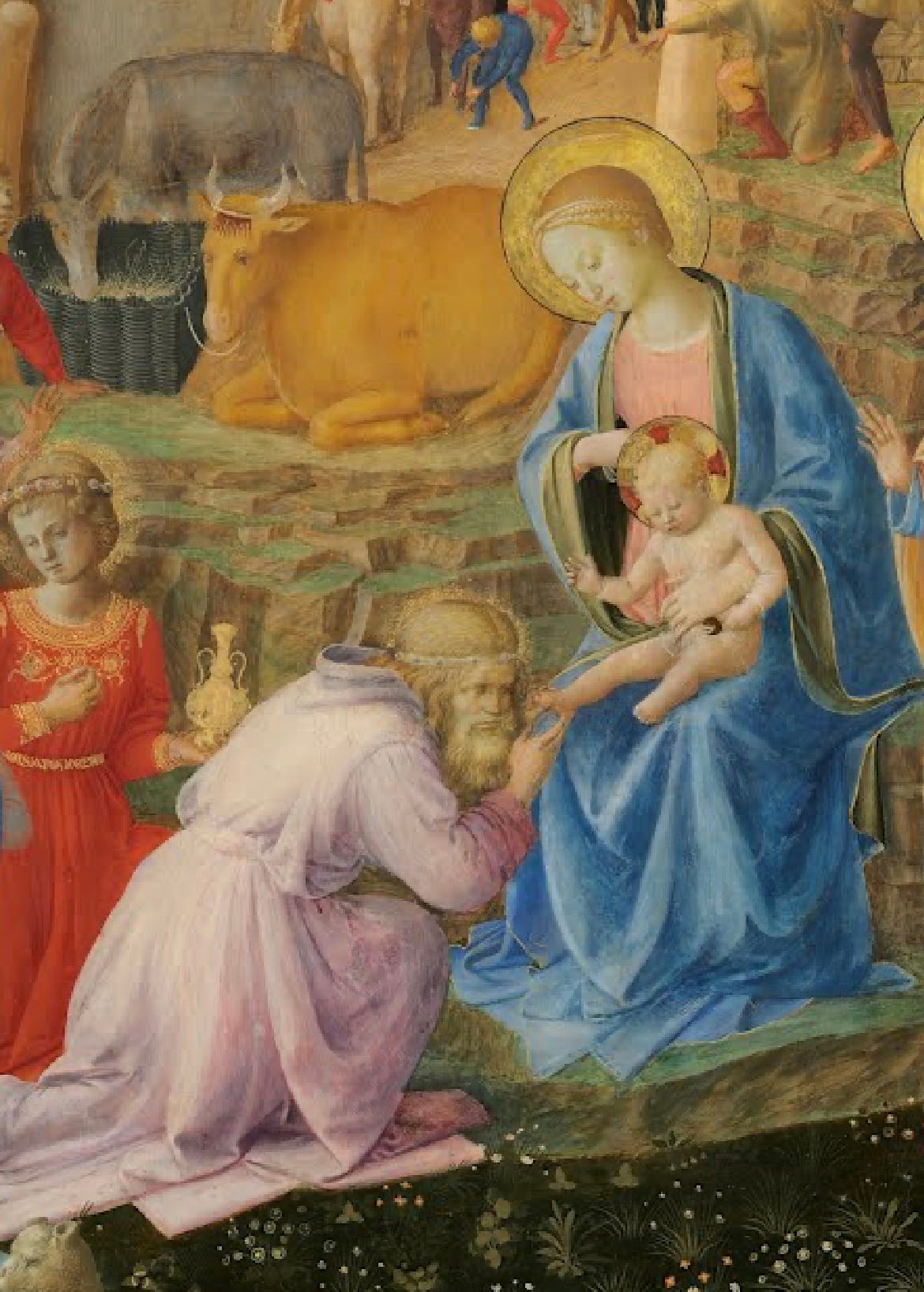
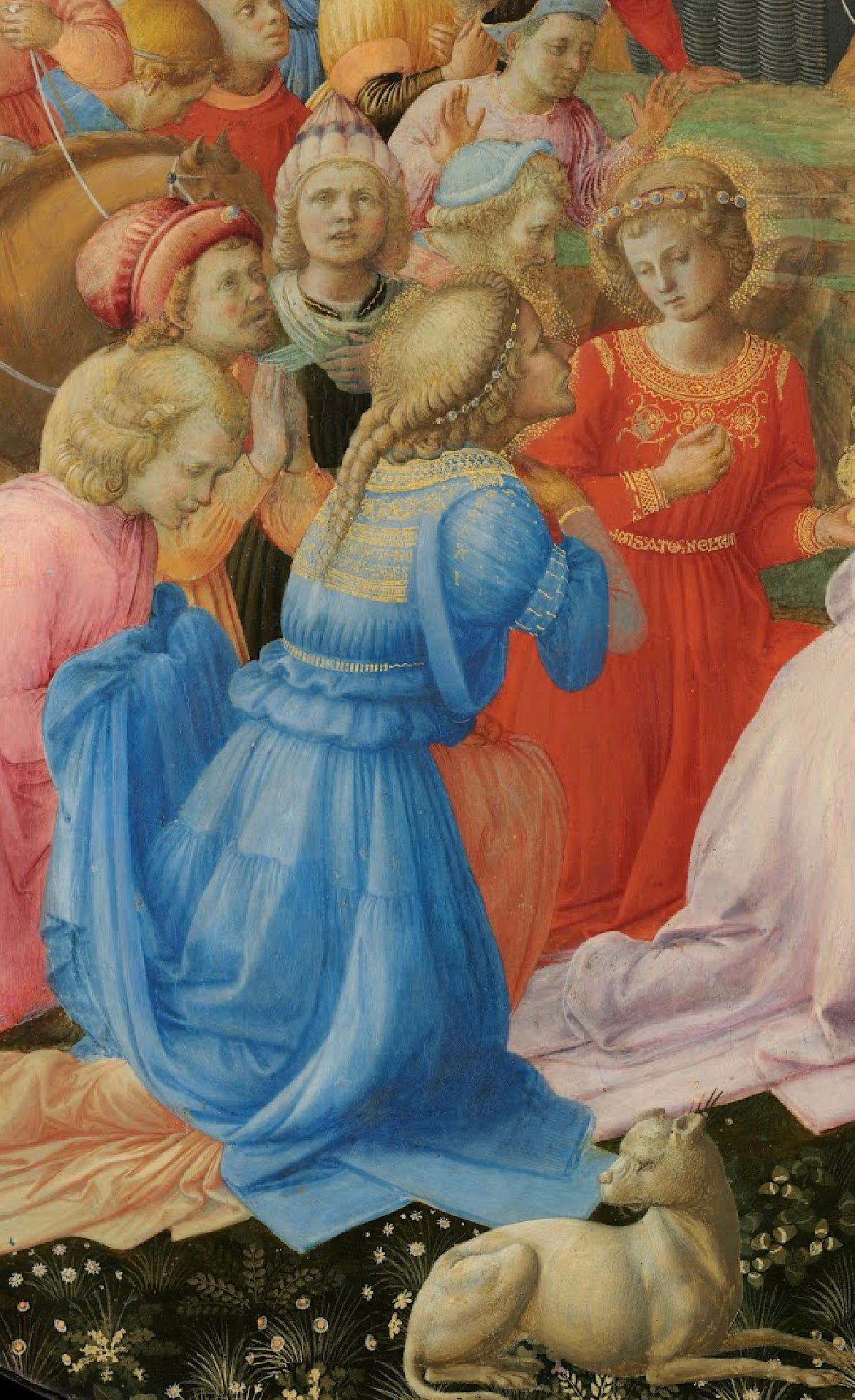
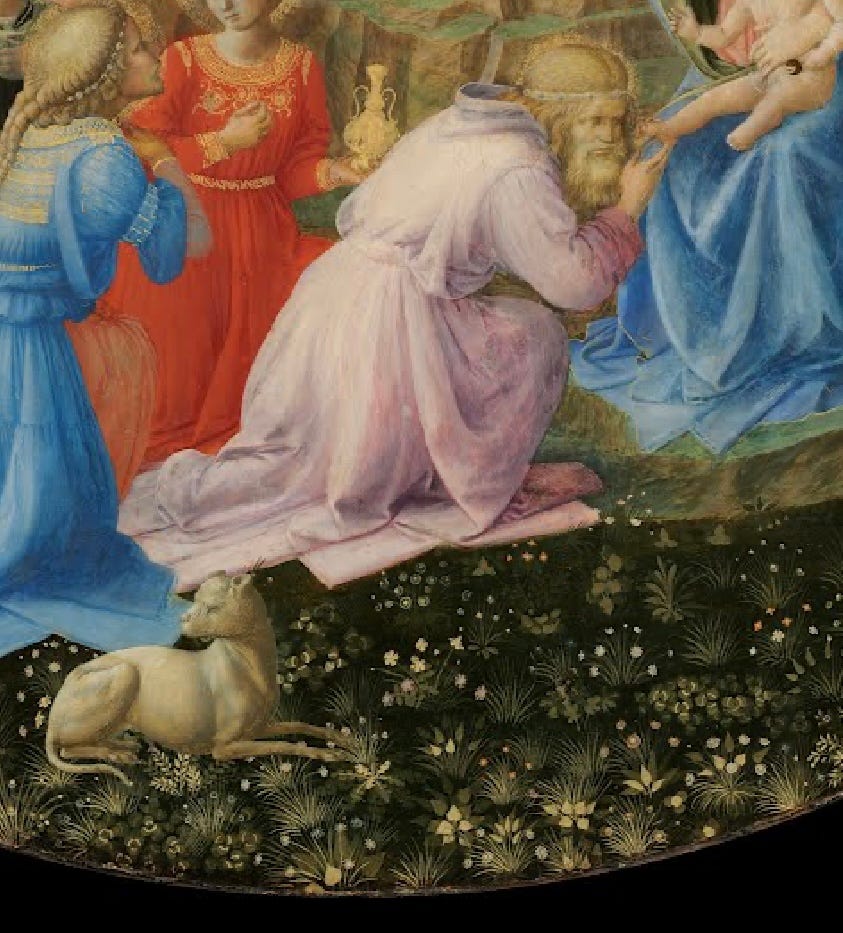
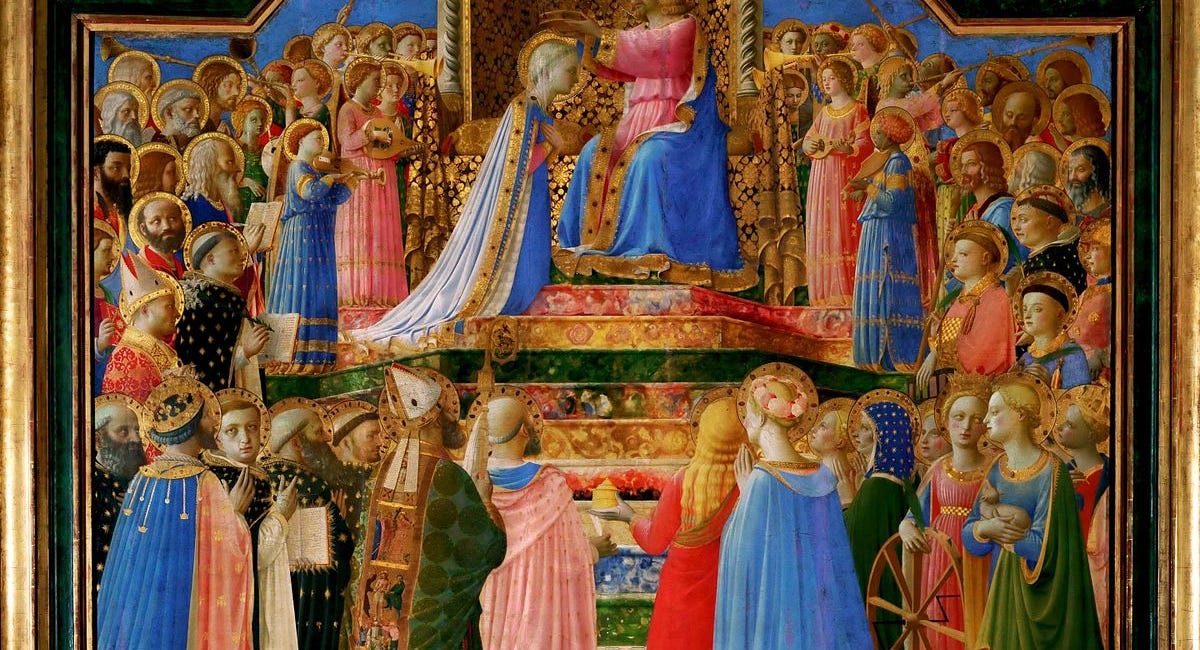
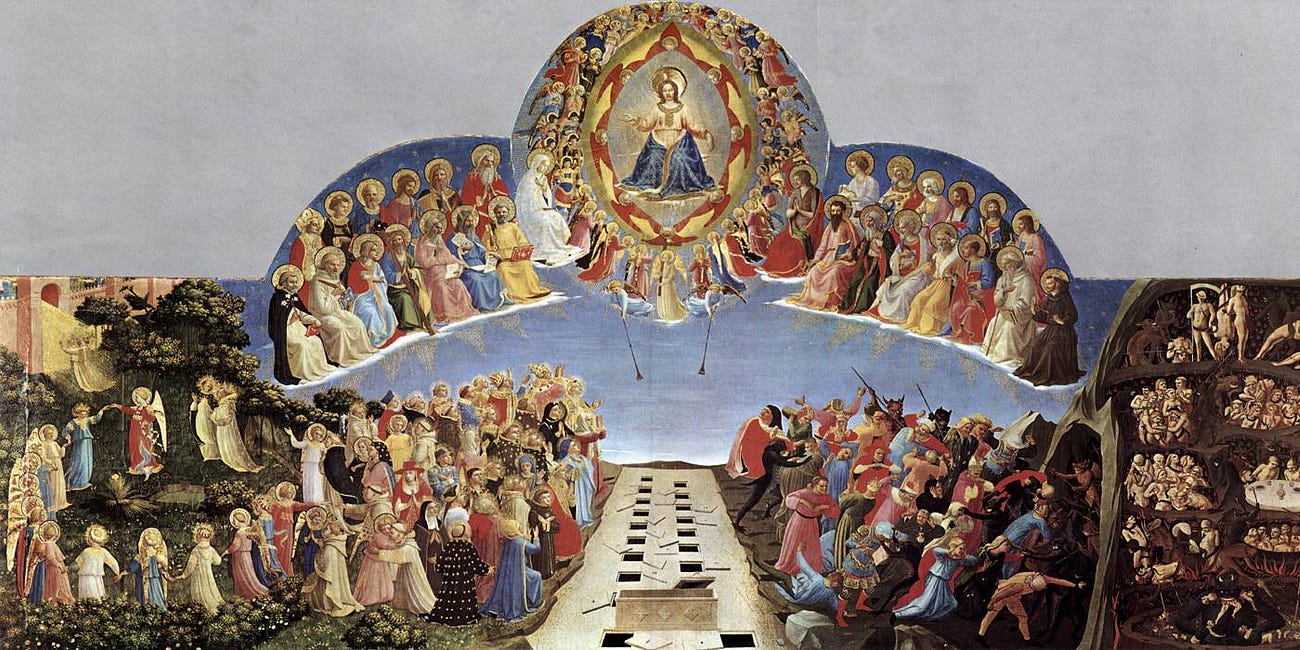

The Epiphany parade in Florence was a treat and with your focusing attention on the different types of people in the processions depicted by Fra Angelico I felt a renewed sense of the unfathomable mystery that God became man in Christ. Do you identify with the mother who has two toddlers?
Bravo! Your essay reminds me of Rosetti's poem: oh, what shall you give? A lovely essay.